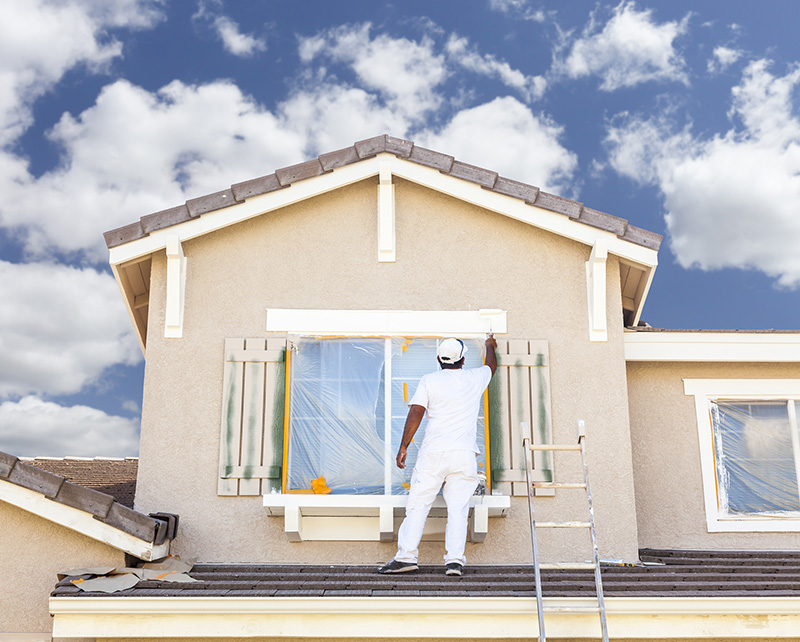Choosing the appropriate painting contractor is an essential step in upgrading your home, whether you're refreshing the interior or improving your property's curb appeal. With so many contractors available, it’s vital to ask the right questions before making a decision. This not only makes sure you hire a skilled professional but also aids you comprehend their processes and ensure a smooth painting project.

In this article, we will review the top questions to ask your future painting contractor. From learning about their expertise and approaches to discussing budgeting and timelines, having these talks will empower you as a homeowner and set the stage for a hassle-free painting experience. By being aware, you can enjoy the rewards of a high-quality paint job that increases your home's beauty and value.
Key Questions for Hiring a Painter
When selecting a painting contractor, it's important to ask about their expertise and qualifications. Inquire how long they have been involved and request references from former clients. This will provide you a view into their trustworthiness and caliber of work. Moreover, knowing if they specialize in interior space or exterior surface painting can assist you determine if they are the suitable fit for your job.
Make sure to discuss the type of paint they advise and their method to preparation. A knowledgeable painter should be able to explain the differences between oil and water paints, as well as the various finishes available. Inquire about sustainable paint options, especially if environmental impact is a consideration for your project. Understanding their recommended techniques for both interior space and outdoor work will give you confidence in their abilities.
Lastly, establish the timeline and financial plan for your painting project. Ask for a detailed estimate that outlines the prices of materials and labor. It’s also important to verify their timing and how they organize their commitments. Discussing payment terms and any assurance on their work can further ensure you are making an educated decision when hiring a painting contractor.
Understanding Color and Methods
Selecting the appropriate type of paint can greatly impact the consequences of your project. There are typically two types of paint: solvent-based and water-based. Oil paints are famous for their long-lasting quality and are frequently used for spaces that require a harder finish, such as baseboards and cupboards. Yet, they take longer to dry and can have powerful odors. Water-based paints, on the contrarily, set quickly, have reduced VOC emissions, and are easier to clean, making them ideal for the majority of interior walls.
Furthermore, knowing the different kinds of paint sheens is essential when selecting paint for your home. The texture determines not only the visual effect but also the functionality of the paint in various rooms. Flat finishes are ideal for lightly-used areas, while semi-gloss finishes are better suited for living rooms and hallways due to their minor sheen, which renders them simpler to clean. Shiny and semi-gloss finishes are perfect for busy areas and locations that need to bear abuse, such as kitchens and washrooms.
Ultimately, the method used for putting on paint can dramatically change the final outcome. Spraying provides a even coat but needs practice and safety precautions due to spray mist. Roller application is a conventional method that is useful for larger surfaces, while Brush application allows for detail in limited areas and detail work. Each method has its own specific range of benefits and challenges, and comprehending these will enable you or your hired contractor to attain the best finish achievable for your painting project.
Preparation and Upkeep Advice
Prior to starting any painting project, effective preparation is essential for securing a smooth and durable finish. Begin by removing the area of items and covering floors with drop cloths to shield them from leaks and splashes. Examine walls for blemishes, and fix any cracks or voids with spackle or appropriate filler. Cleaning the surface is also vital; dust and grime can impede paint adhesion, so clean the surfaces with mild detergent and let them to dry completely before putting on paint.
Once your areas are ready, think about the significance of selecting the right paint and tools. For high-traffic areas, choose durable paint that can tolerate use and tear, while also factoring in the sheen that will best suit the room's purpose. If you opt for a matte, satin, or glossy finish will significantly influence not just the look but also the durability of the paint job. Additionally, investing in https://www.happypaintingcompany.com/ and rollers can create a huge impact in the application procedure, guaranteeing an even coat and reducing visible roller marks.
Once the paint has dried, adequate maintenance will ensure your home looking fresh for an extended period. Consistently check for signs of damage and tear, particularly in high-traffic areas, and wipe walls gently as needed to eliminate marks. As planning to repaint, consider how often your home experiences severe weather conditions, as this can affect the outdoor paint’s durability. Creating a maintenance schedule allows you to take care of minor problems before they demand major repairs, making sure your painted surfaces stay vibrant and beautiful.
